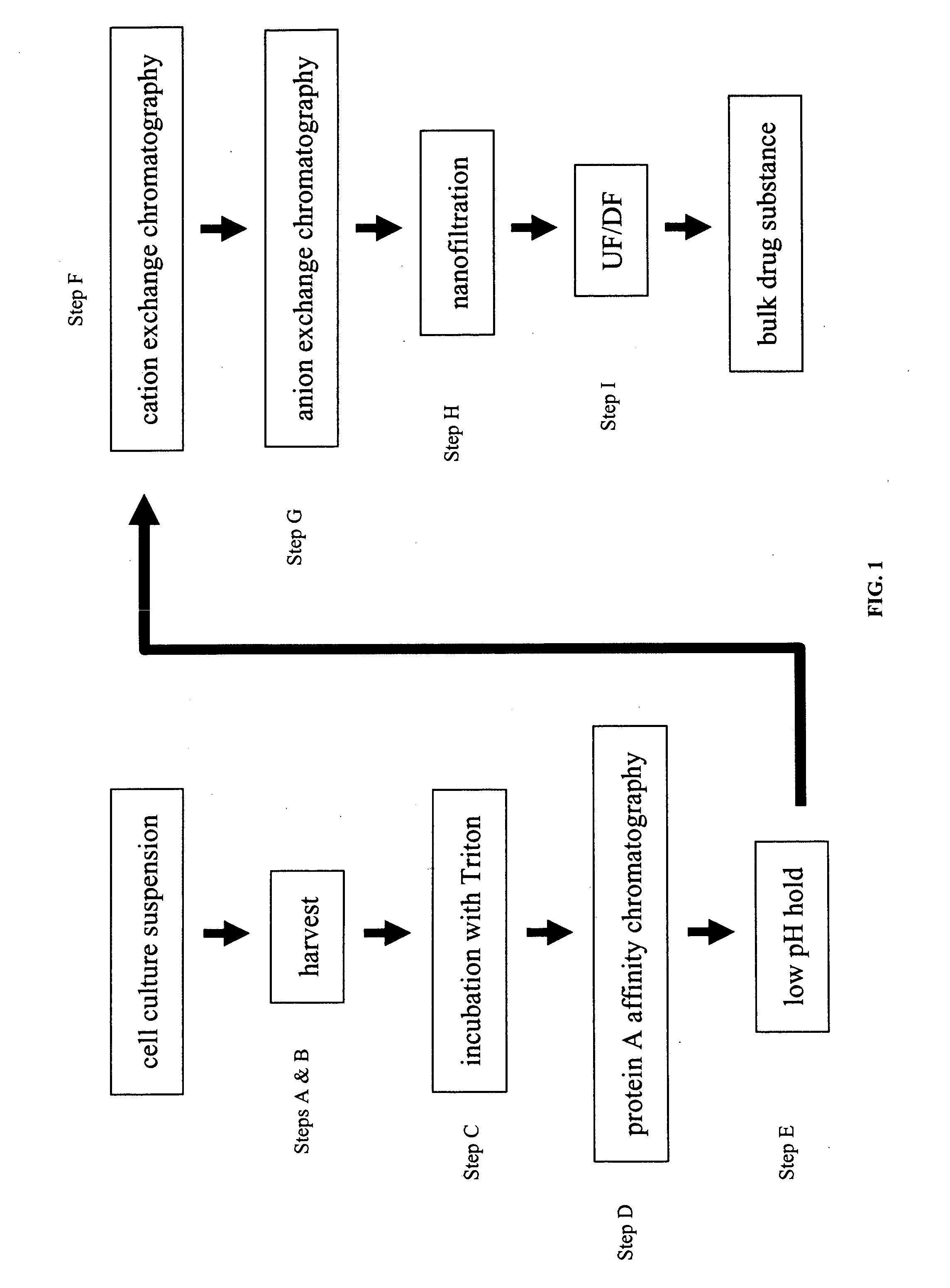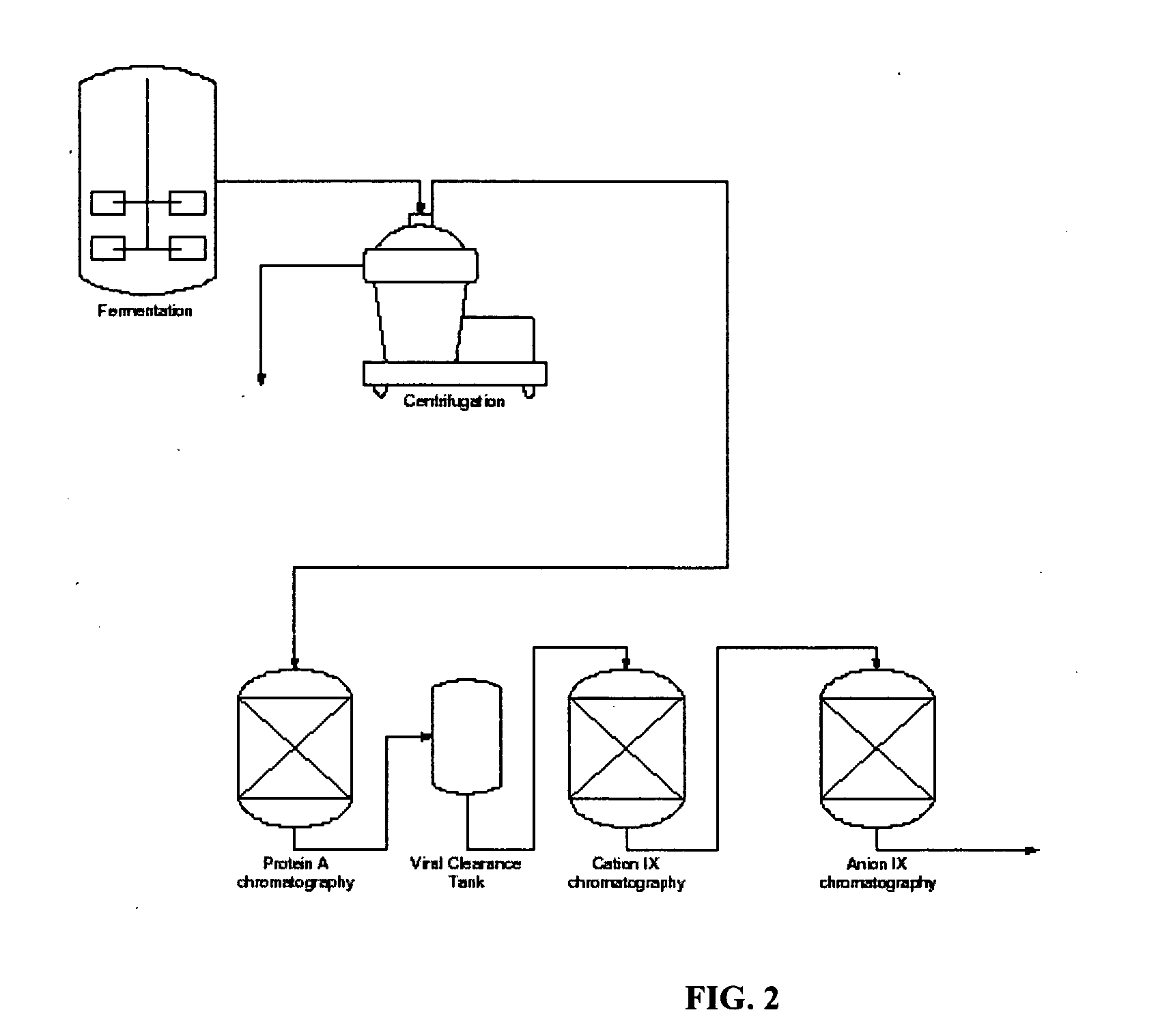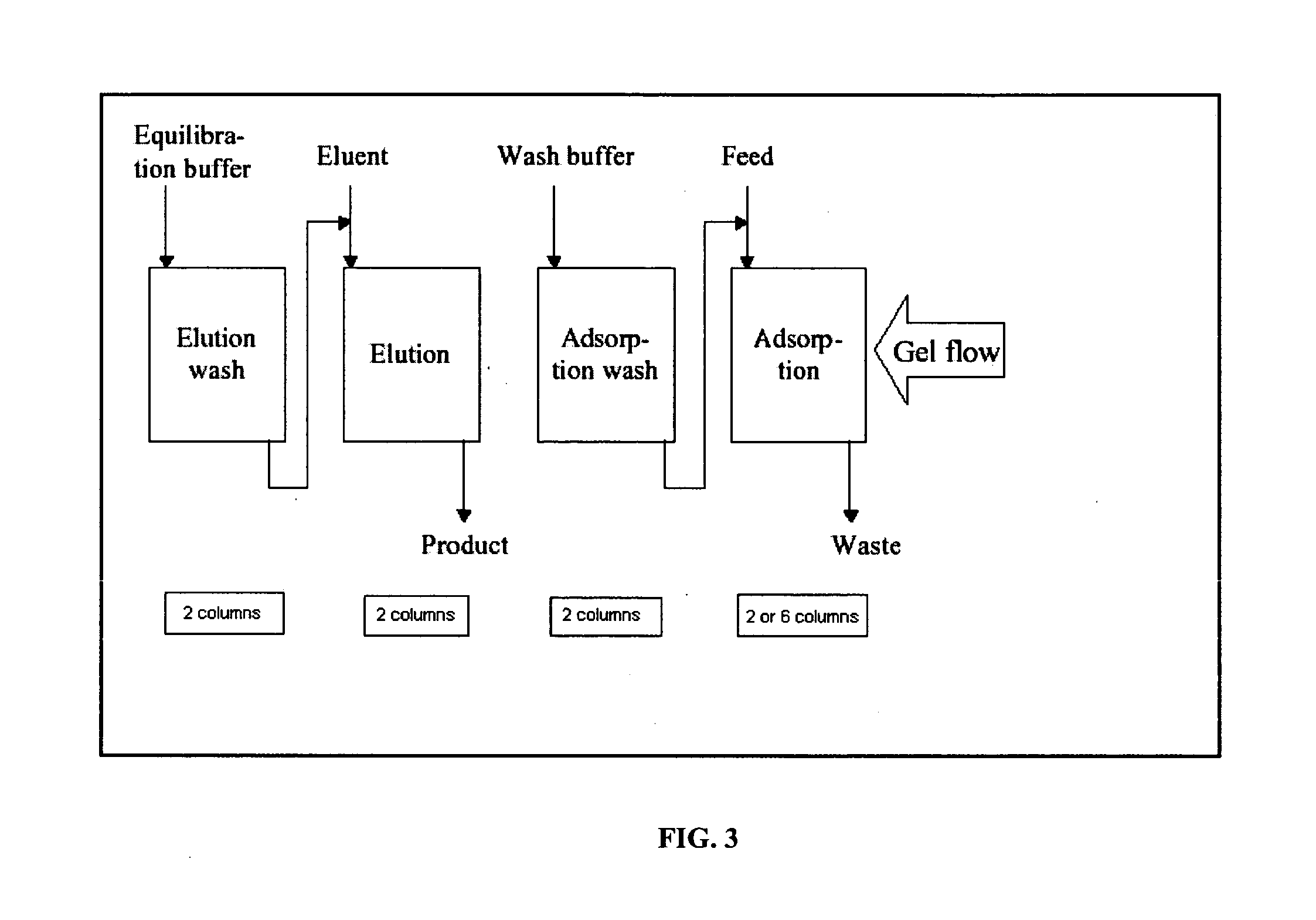Method of purifying polypeptides by simulated moving bed chromatography
a chromatography and polypeptide technology, applied in the direction of peptides, separation processes, instruments, etc., can solve the problems of increasing the cost of product purification, comparatively long process, and high cost of protein chromatography resins, so as to reduce the linear flow rate
- Summary
- Abstract
- Description
- Claims
- Application Information
AI Technical Summary
Benefits of technology
Problems solved by technology
Method used
Image
Examples
example 1
Purification of a Monoclonal Antibody Using an Eight Zone Simulated Moving Bed System
[0078] The simulated moving bed, SMB, technology was applied to the Protein A initial purification step of a monoclonal antibody. The system consisted of twenty columns arranged in a circle attached to a rotating carousel. Eight independent zones were established for the SMB continuous system.
[0079] A. Description of Equipment
[0080] The central valve, which consisted of three sections (top middle and bottom), delineated the eight processing zones. The top part of the valve remained stationary during the process and the inter-connections of the outlet ports defined the processing zones. The middle section of the valve was a Teflon ring that allowed the bottom section to turn freely. The bottom section of the valve was connected to the top and bottom of each column.
[0081] Each processing zone required a specific buffer and flow rate. Eight HPLC pumps were employed to deliver to the inlet sections of t...
example 2
Purification of a Monoclonal Antibody Using an Alternate Eight Zone Simulated Moving Bed System
[0109] A Simulated Moving Bed System which was similar to the SMB system described in Example 1 was used to purify an antibody. This system also consisted of twenty (20) columns arranged in a circle attached to a rotating carousel. Eight independent zones were established for the SMB continuous system. A diagram of this system is depicted in FIG. 9.
[0110] The configuration of this system differed from that described in FIG. 8 in (a) that all columns operated in downflow and (b) that the elution wash zone used four (4) columns in series and the elution zone used two (2) columns in series.
example 3
Demonstration of Reproducibility of Antibody Purification
[0111] The Simulated Moving Bed System described in Example 2 (and depicted in FIG. 9) was used to examine the reproducibility of the present antibody purification process. In a SMB system reproducibility is required both in between the individual columns (in this case 20 columns), and in between SMB cycles (rotations). Reproducibility in between columns is shown in FIG. 11 by comparing the UV traces from Wash 1. The detector is depicted in FIG. 9 as UV between columns 15 and 16. The signal from this detector is shown for 20 column switches, representing Wash 1 from 20 individual columns in this particular position for two independent rotations of the SMB cycle. As can be seen from FIG. 11, the signals recorded are consistent from all 20 switches and even overlap for two independent rotations, thus demonstrating column to column reproducibility of the purification.
[0112] The reproducibility between rotations (of the 20 column ...
PUM
| Property | Measurement | Unit |
|---|---|---|
| pH | aaaaa | aaaaa |
| pH | aaaaa | aaaaa |
| pH | aaaaa | aaaaa |
Abstract
Description
Claims
Application Information
 Login to View More
Login to View More - R&D
- Intellectual Property
- Life Sciences
- Materials
- Tech Scout
- Unparalleled Data Quality
- Higher Quality Content
- 60% Fewer Hallucinations
Browse by: Latest US Patents, China's latest patents, Technical Efficacy Thesaurus, Application Domain, Technology Topic, Popular Technical Reports.
© 2025 PatSnap. All rights reserved.Legal|Privacy policy|Modern Slavery Act Transparency Statement|Sitemap|About US| Contact US: help@patsnap.com



